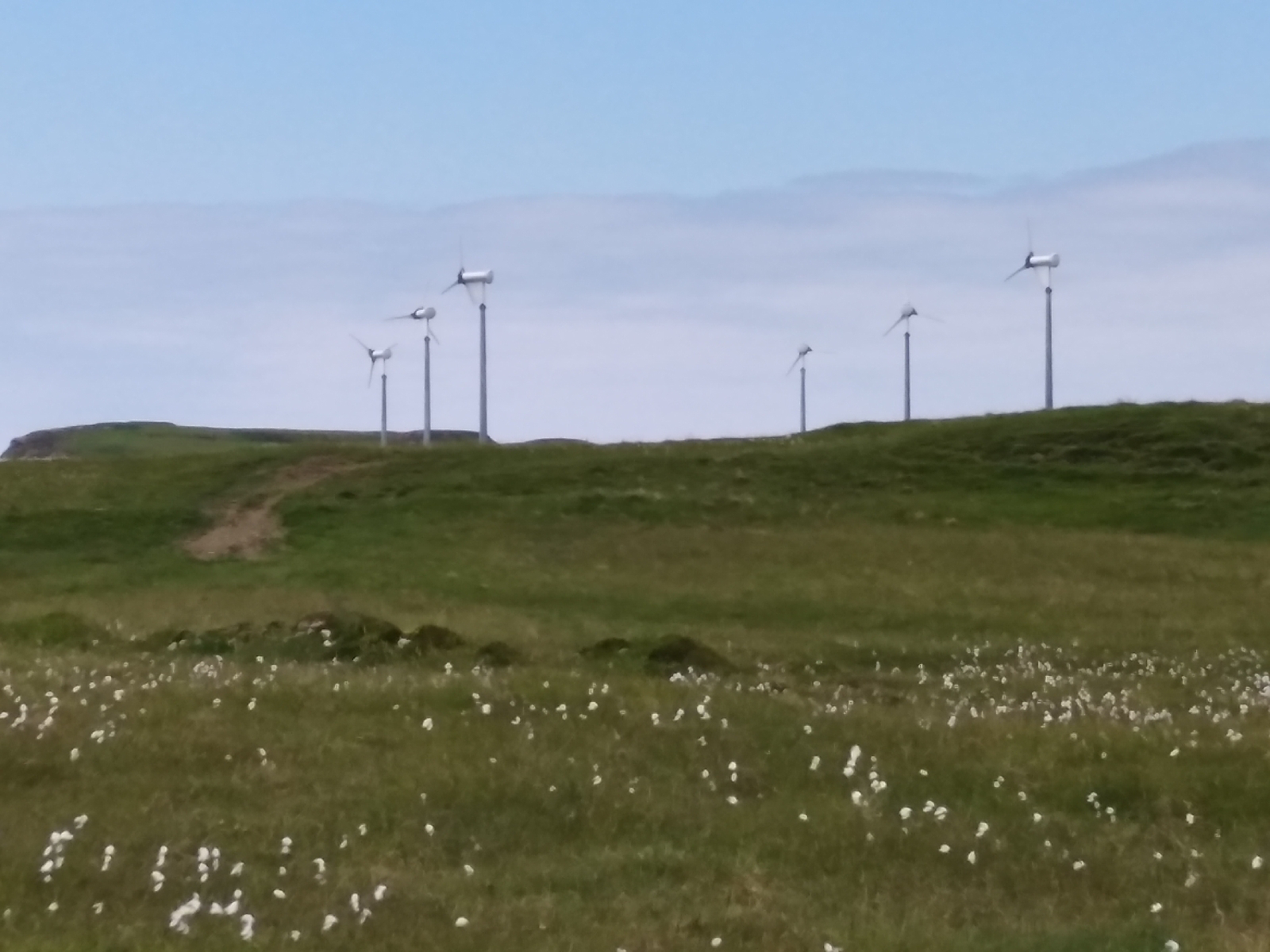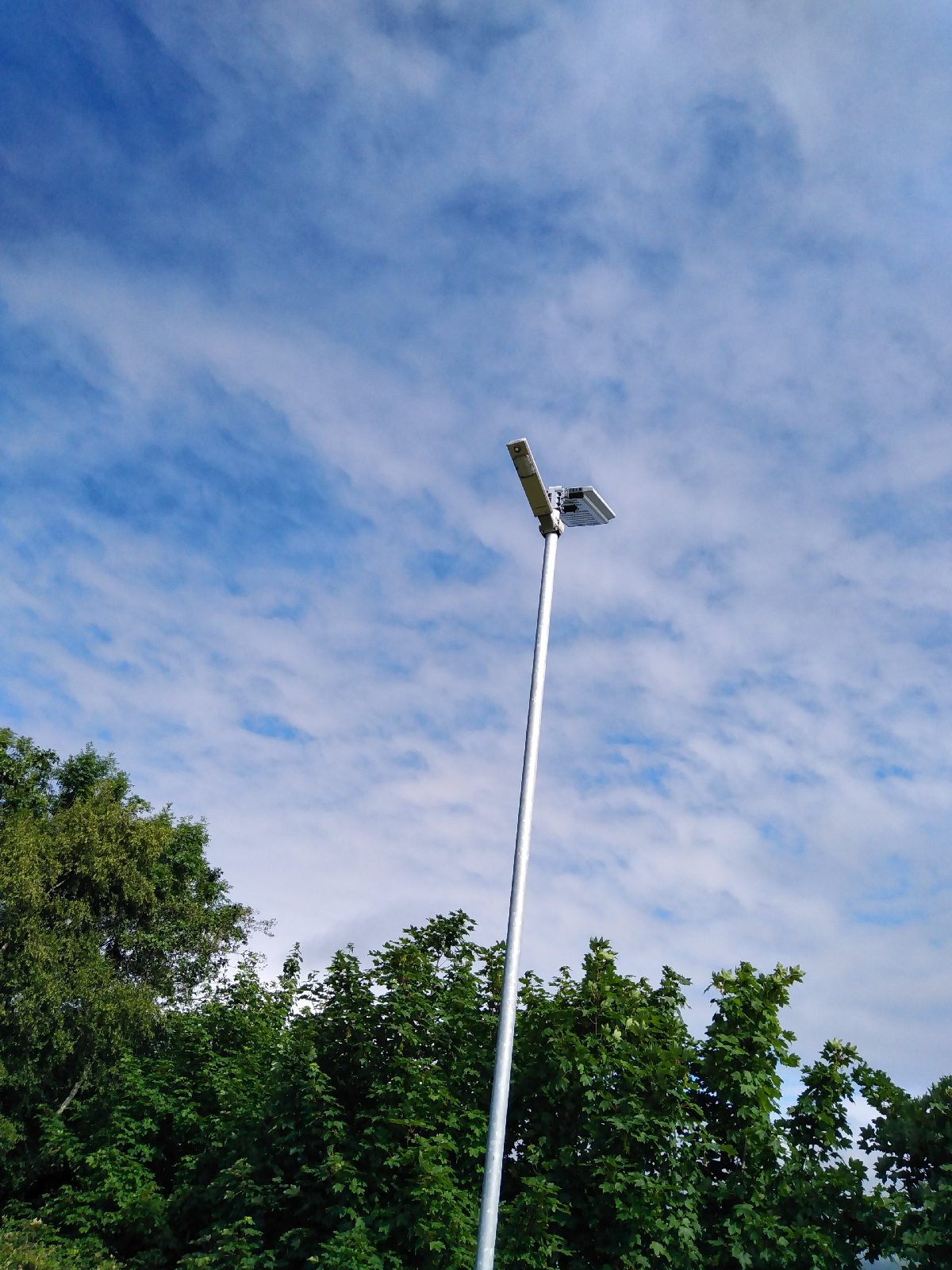This lovely programme is available for a few days more and gives details about the Isle of Canna Electricity Generation Scheme. It shows the battery array inside the barn. This site gives more technical details. Whilst researching Shetland earlier in the month, I found a figure that says there is a requirement of 1MW power generation for 750 houses. Here there are maybe 10 households which would need a nameplate capacity of 13.3kW. Either the solar or the wind would easily cover this but for long foggy spells, there are the batteries. The programme quotes 130000kWh per year which is an average of 14.8kW across both day and night! The figure given of 30kW is roughly double that - accounted for by 12 hours of daylight and 12 hours of darkness on average.
Tuesday, 27 June 2023
Monday, 26 June 2023
Solar street lamps in Millom
These street lamps caught my eye. Each one has its own individual solar panel. I realised that I shouldn't be surprised because I have a solar powered light for going out to the garage. But I thought more about it: my garage light isn't on all night; it is only on when it detects me. So a closer look reveals that there is a PIR sensor on these as well. It means they only come on when necessary. It means solar power is adequate (and the use of LEDs allows this too) It also means that there is less light pollution. I found the company website.
Thursday, 22 June 2023
Why do dyes have colour?
So why do synthetic dyes have such great colours? Apparently, it is because the organic (carbon-based) molecules have "conjugation". This is going to take some unpacking but it essentially means that the electron energy levels from quantum physics are modified by the combination of atoms in the molecule so that the energy difference between the highest and the lowest level is reduced to a level consistent with the visible colours in the electromagnetic spectrum. This is going to take some more work on Molecular Orbital Theory.
Monday, 19 June 2023
Tubular Bell on Canna
The metal pole hanging from the bottom of the gate by the camp site sounded a note every time the gate was opened. The pole was about 1.5m long. The longest stationary wave possible has a node in the middle and antinodes at each end. That adds up to half a wavelength, so the wavelength would be 3m. Assume speed of sound in air is 330m/s, then f = 330/3 = 110Hz. That would be a low A so quite feasible.
Saturday, 17 June 2023
PV Greine air a' mhullach! - PV solar cells and temperature
We had glorious weather on Canna where I found this sign. There has been a lot of noise nationally from the opponents of solar power about how their performance is poor in hot weather. I looked it up here. It seems that, yes, there is a slight reduction in power output but from the figure quoted, it is not a pronounced effect. On Canna, anything over 25 Celsius would be amazing - though perhaps the panels themselves reach a higher temperature because they are dark and absorb.
Thursday, 15 June 2023
A novel theory about tides in Scalloway
This was an amazing discovery in Scalloway. It is hard to read the inscription now. I looked up what it was about and found this amazing blog post.
Tuesday, 13 June 2023
Shetland HVDC Connection
It turns out that a crucial part of the wind farm project is to connect Shetland to the mainland National Grid. However, this is not in the way I'd expected. I have to confess that I'd never come across the concept of High Voltage DC transmission. Now I come to think about it, we taught that power transmission is AC partly because it is generated as AC and mainly because it can be transformed to high voltage, low current to reduce losses. Here's the Shetland HVDC details. The page on HVDC points out that the technology only came of age less than a decade before my university studies which will explain why I missed it.
Monday, 12 June 2023
Viking Wind Farm, Shetland
We drove past a massive wind farm construction on Mainland Shetland. It is the Viking Wind Farm. You can see the crane lifting parts up on the right hand mast. At the moment it sounds as though it will be 103 turbines with a nameplate output of 443MW. This is much higher than the diesel power station in Lerwick but is much more variable and will depend heavily on the capacity factor. However, it is clearly more than the islands need in terms of electricity. For that reason, a cable is being connected to the north coast of Scotland.
Sunday, 11 June 2023
Power station on Shetland
I'm always interested in how islands are powered. Shetland is not connected to the National Grid so there is a power station in Lerwick. The details are here. Shetland has a population of 23000. At say 3 people per house on average that might be about 8000 households. I found this data on power use per household. It says the old rule of thumb was 1000 households per MW. This is from the 1970s and American. It says that was later updated to 750 households per MW. This would mean that Shetland would need a capacity of 10MW for domestic use. It sounds as though Sullom Voe oil refinery has its own power station. Not sure how much industry would use but it seems that the 66MW nameplate capacity on the power station is good.
Saturday, 10 June 2023
Fog horn on Sumburgh Head
Sunday, 4 June 2023
Loom weights
These are ancient loom weights in the museum in Lerwick, showing how they were used. I found a similar-sized pebble. It had a mass of 300g. There seem to be about 15 threads from each pebble. So there is perhaps 3N weight supported by 15 threads, a tension of 0.2N in each thread. That doesn't sound like very much!
Friday, 2 June 2023
Stationary waves at the Tebay roadworks
The orange tape on the left hand side was fixed to regular cones and was oscillating in the wind. The regular fixings acted as nodes. Mostly the tape oscillated up and down with a pattern like a skipping rope and therefore with an anti-node in between the cones. This is a classic stationary wave. For the most part, neighbouring lengths were oscillating in phase with each other - in other words, when one went up, the neighbour went up too. However, some were in anti-phase. Some others seemed to have a node in the centre of the length so they would have half the wavelength and thus double the frequncy.
Subscribe to:
Posts (Atom)


















